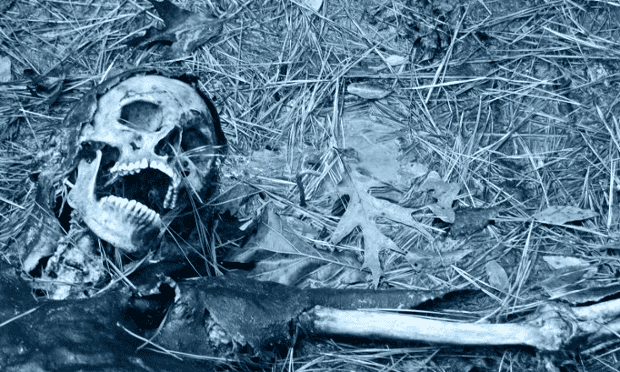by MO COSTANDI

Far from being dead, a rotting human corpse is the cornerstone of a complex ecosystem. A better understanding of this ecosystem could have direct applications in forensic science.
John had been dead about four hours before his body was brought into the funeral home. He had been relatively healthy for most of his life. He had worked his whole life on the Texas oil fields, a job that kept him physically active, and in pretty good shape. He had stopped smoking decades earlier, and drank moderate amounts of alcohol.
Lately, his family and friends had noticed that his health – and his mind – had started to falter. Then, one cold January morning, he suffered a massive heart attack, apparently triggered by other, unknown, complications, fell to the floor at home, and died almost immediately. He was just 57 years old. Now, he lay on the metal table, his body wrapped in a white linen sheet, cold and stiff to the touch, his skin purplish-grey – tell-tale signs that the early stages of decomposition were well under way.
Most of us would rather not think about what happens to our selves and loved ones after death. Most of us die natural deaths and, at least in the West, are given a traditional burial. This is a way of showing respect to the deceased, and of bringing a sense of closure to bereaved family. It also serves to slow down the decomposition process, so that family members can remember their loved one as they once were, rather than as they now are.
For others, the end is less dignified. A murderer might bury his victim in a shallow grave, or leave their body at the scene of the crime, exposed to the elements. When the body is eventually discovered, the first thing that the police detectives and forensics experts working on the case will try to establish is when death occurred. Time of death is a crucial piece of information in any murder investigation, but the many factors influencing the decomposition process can make it extremely difficult to estimate.
The sight of a rotting corpse is, for most of us, unsettling at best, and repulsive and frightening at worst, the stuff of nightmares.
Far from being ‘dead,’ however, a rotting corpse is teeming with life. A growing number of scientists view a rotting corpse as the cornerstone of a vast and complex ecosystem, which emerges soon after death and flourishes and evolves as decomposition proceeds.
We still know very little about human decay, but the growth of forensic research facilities, or ‘body farms,’ together with the availability and ever-decreasing cost of techniques such as DNA sequencing, now enables researchers to study the process in ways that were not possible just a few years ago. A better understanding of the cadaveric ecosystem – how it changes over time, and how it interacts with and alters the ecology of its wider environment – could have important applications in forensic science. It could, for example, lead to new, more accurate ways of estimating time of death, and of finding bodies that have been hidden in clandestine graves.
The Guardian for more
